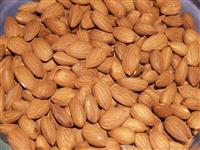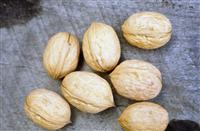
Study How to Grow Nuts
- Learn to identify and grow a wide range of edible nuts
- Learn from professional university trained horticulturists with decades of industry experience
- Build networks within industry and discover opportunities for commercial production or self sufficiency
- With increased pressure on food supply & the environment, opportunities for food production experts are set to expand in the future -Now is the time to study.
This course will reveal the world of nut growing, expanding your horizons, deepening your knowledge and laying a foundation to explore and do things with nuts which you might not have previously considered.
Lesson Structure
There are 9 lessons in this course:
- Introduction
- What is a Nut
- Identifying Plants Accurately
- Classification of Nuts into their Plant Families
- Juglanaceae,
- Coylaceae,
- Fagaceae,
- Burseraceae,
- Lecthidaceae
- Sterculiaceae
- Rosaceae
- Pinaceae
- Anacardiaceae, etc
- Review of Botany of Nuts: flowers and fruit development
- Resources
- The Most Commonly Grown Varieties
- Overview of Nut Culture
- Comparing most common nuts
- Terminology
- Almond
- American Hazlenut
- Cashew Peanut
- Walnut
- Macadamia
- Culture of Nuts
- Site Selection and Management
- Soils
- Soil Testing
- Water Management
- Nutrition and Feeding
- Plant Health: pest and disease, protection from wind, salt, air, etc
- Common problems with different types of nuts
- Planting
- Terminology
- Weed Management
- Pruning
- Less Common Nuts
- Pecan
- Pistacio
- Pine Nuts
- Auraucaria
- Chestnut
- Filbert
- Brazil Nut
- Beech
- Oak
- Sunflower
- Pili Nut
- Cola Nut
- Cocao
- Hausa Groundnut
- Acacia, and more
- Propagation
- Seed Propagation of Nuts
- Cuttings
- Layering
- Grafting
- Propagating Corylus
- Propagating Pinus
- Propagating aids and structures
- Harvest and Post-harvest of Nuts.
- Harvesting
- Cleaning, Cracking and Shelling
- Drying and Storage
- Handling Almonds
- Cashews
- Chestnuts
- Pine nuts
- Walnuts
- Hazlenuts
- Pistacios
- Marketing Nuts
- Overview
- Where to sell nuts
- Marketing Processes
- Market Research
- Uses of Nuts: Food and other uses
- Workplace Health, Safety and Risk Management
- Duty of Care
- Risk Assessment in a Horticultural Enterprise
- Financial Risks
- Keeping the Workplace Safe
- Protective Clothing
- Equipment Safety (Tools and Machinery)
- Safety with Manual Handling and lifting
- Special Assignment
- PBL Project Develop a plan for growing selected varieties of nuts in a specific location
Each lesson culminates in an assignment which is submitted to the school, marked by the school's tutors and returned to you with any relevant suggestions, comments, and if necessary, extra reading.
Aims
- Identify and describe a large variety of different types of nuts
- Determine the cultivation practices appropriate to a range of different nut crops.
- Determine how to propagate a range of different nut plants.
- Determine appropriate techniques for harvesting a nut crop.
- Specify an appropriate post-harvest treatment for a nut crop.
- Develop marketing strategies for nuts.
What You Will Do
- Distinguish between common and scientific perceptions of the term nut.
- Compare the botanical characteristics of the fruits from five different nut genera.
- Describe the botanical classification of twenty different species of nut plants, including where appropriate, botanical interrelationships.
- Prepare a plant collection of twenty-five different nut varieties, including the following details on each plant:
- Plant names (Common and scientific)
- A photo, illustration or pressed specimen
- Cultural details
- Harvest & Post-harvest
- Uses (eg. valuable products).
- Develop a resource file of forty items of information relevant to the nut growing industry, including:
- Suppliers of nut plants
- Trade or grower associations
- Publications
- Perform simple tests on three different soils to determine:
- Soil type
- pH
- Drainage
- Water holding capacity
- Evaluate three different soils tested in 2.1 to determine nut varieties suitable for growing in each.
- Explain soil management requirements for at least ten different nut varieties, including:
- Nutrition
- Soil structure
- Physical attributes
- Explain the control of twenty different pests and diseases on ten different nut varieties.
- Develop guidelines for the culture of a specified variety of nut, in the learner's locality, including:
- Watering
- Weed control
- Soil management
- Fertilising
- Pest control
- Disease control
- Prepare a twelve month plan for cultural practices on a specified nut plantation.
- Explain different methods of propagating five different nut species, including:
- Seed
- Grafting
- Layering
- Cuttings
- Determine propagation methods for fifteen different nut species, including where applicable, rootstock variety names.
- Demonstrate how to prepare cuttings for two different nut species.
- Demonstrate three different types of grafts, suitable for propagating nut varieties.
- Determine seed germination procedures for ten different nut genera.
- Prepare a production schedule, for nursery production of a specified type of nut.
- Propagate two different nut plant varieties.
- Explain the operation of a mechanical harvester which can be used for nuts.
- Determine when to harvest four different specified nut species.
- Compare the efficiency of four different techniques for harvesting nuts.
- Describe two different storage techniques for a specified nut variety.
- Determine the optimum environmental conditions for the storage of three different nut species.
- Evaluate three different samples of nuts, which have been stored using three different techniques.
- Determine the commercial processing techniques used for five specified nut species.
- Explain post-harvest handling of a specified nut species, by a commercial plantation in a specified locality.
- Determine different ways in which nuts can be consumed.
- Compare different ways nuts are packaged for retailing, with reference to different factors including:
- Physiological impact on the nut
- Cost of packaging
- Presentation
- Explain the marketing of two different specified nut products, in your locality.
- Develop a marketing plan for one specified type of nut.
What is a Nut?
Nut is a general term used to describe oily, dry seeds (or the fruit) of certain plants.
Nuts are actually seeds (however not all plant seeds are nuts). Nuts develop in the fruits of many different plants, but not all are edible. Some are grown commercially as edible food products, and others are not. Some have potential that has not yet been exploited, for development as a "gourmet" crop.
Introduction to Nuts
Many nut trees take 5 years or more to bear any quantity of nuts. Some can take 15 years to reach maturity – in a commercial sense they may be a long term investment.
When choosing a site take into consideration the amount of space required, likelihood of frosts and strong windy conditions, as most nut trees are either intolerant of frosts or experience heavy crop losses through hard winds.
Nut trees (with the exception of hazelnuts ie. filberts) grow into large trees that require adequate space. When setting up a nut orchard, growers often space the trees closely together to maximise production in the early stages. They then remove every second tree as they mature (but before the canopy meets) and trees are becoming crowded.
Many nut trees (walnuts are an exception) need a ‘pollinator’ in order to ‘set’ nuts. To provide adequate pollination, at least two trees (different varieties of each species - that are known cross pollinators) should be planted. Because nut trees are generally wind pollinated and most will require a cross pollinator planted close by (within 30m or so) for successful pollination.
Climatic conditions required to produce nuts varies depending on species. Some species such as macadamias, pecans and cashews need long hot summers to mature others such as walnuts, being prone to sunburn, need cooler conditions. Most nut trees species now have several cultivars available that have been developed for certain climates and times of ripening; they are classified as maturing early, mid or late season. This means that planting several cultivars of the same species can provide extended harvest periods. It also gives growers the opportunity to choose cultivars that best suit their climate – for example a late flowering cultivar would be preferable in an area prone to late frosts.
Because it will be many years before you reap the full benefit of your nut orchard it is important to choose species and cultivars that are bred to specific local requirements. It is no use trying to grow trees, particularly for commercial use, that are suited to tropical conditions in a cold climate and visa-versa. Thorough research is therefore required into which species and cultivars are suited to the climate in your area, before planting trees.
Most commercial nut crops prefer to grow in reasonably deep, well drained loam or sandy soil that is slightly acid. Apart from pecans which will tolerate heavier sub-soils the majority of nut species do not perform well on heavy clay soils.
Irrigation is desirable to produce healthy mature trees and to stimulate early production. In climates with dry summers, watering is essential.
Nut trees are generally fairly disease and pest resistant – the most common pest being birds. Pests and diseases are discussed in more detail later in this course.
Although it is possible to grow nut trees from their seeds (nuts) it is much more common and reliable to plant grafted trees. Plants grown from seeds are not identical to their parents, tree vigour, tree form plus nut quality is variable in seed grown trees. Trees that are grafted have been selected for their superior fruit and resistance to disease and root stocks are selected for vigour. Propagation is covered in more detail later in this course.
To develop trees with a strong root system, the area around the trees should initially be weed-free. Mower strips are usually provided between trees – this means easy access for machinery and harvest.
To encourage healthy, strong growth, optimum production and quality nuts, trees require a regular fertiliser program that is designed to meet the needs of each species.
Nut trees are generally pruned in early winter and trained to develop a strong central trunk with five to six main branches.